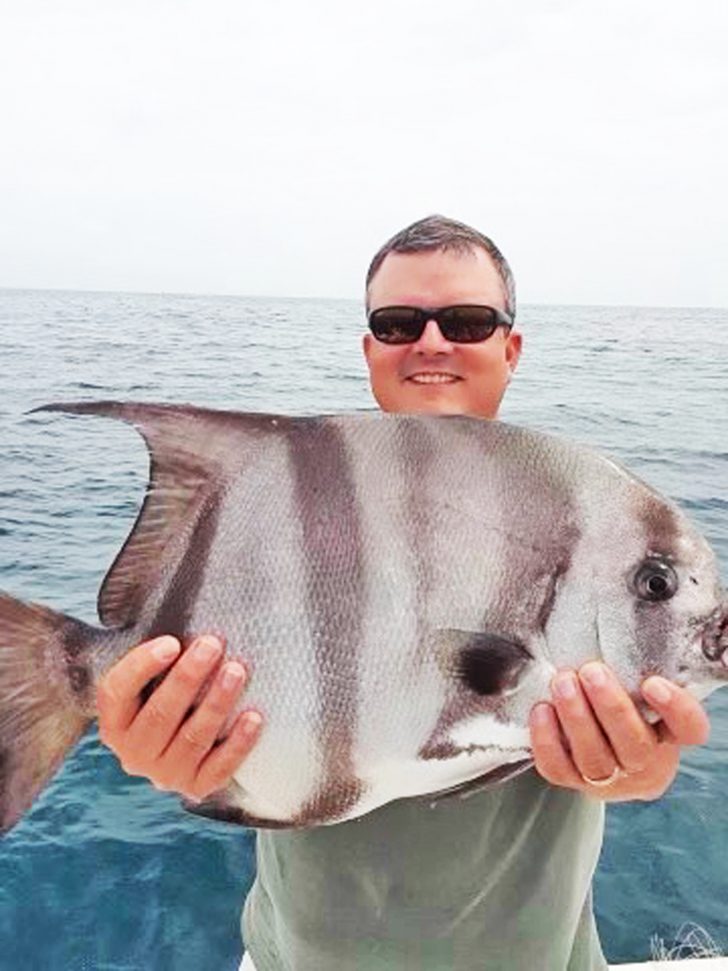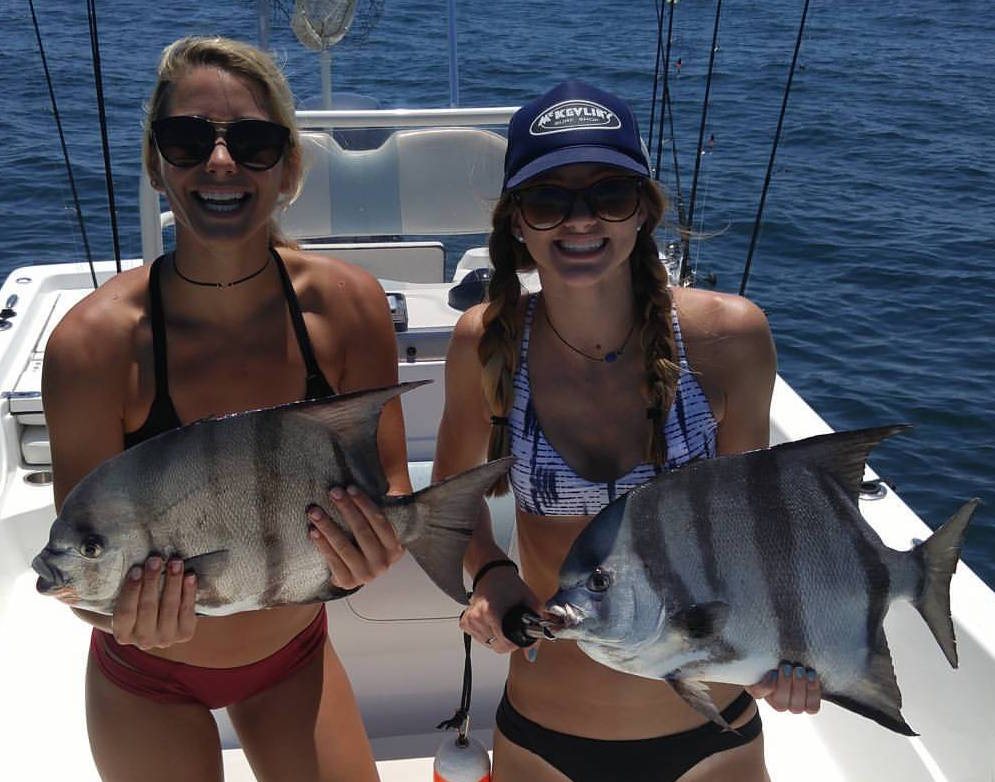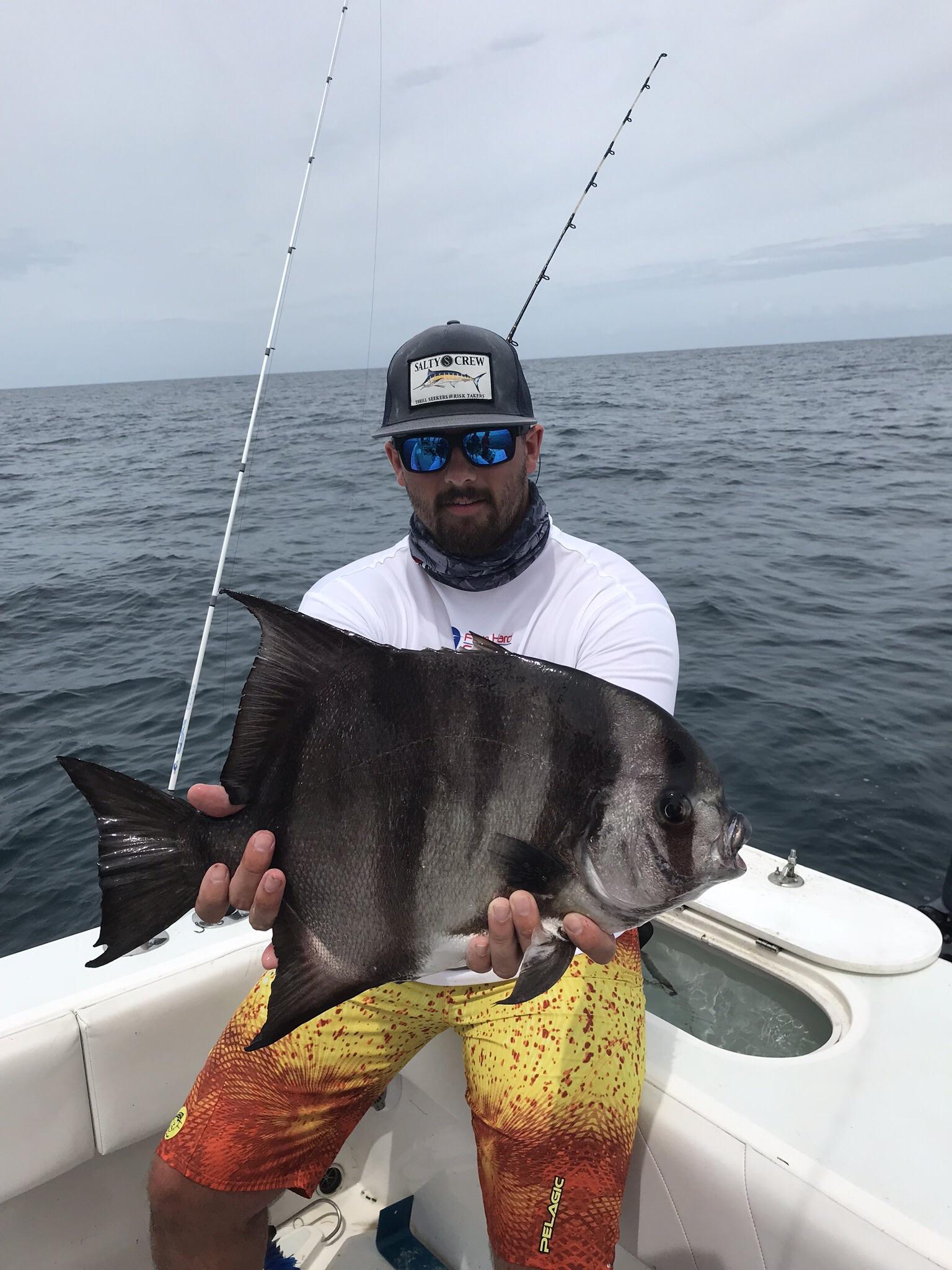
Fishing is not merely a hobby; it’s a way of life. For all the enthusiastic anglers out there, we bring you the “A Comprehensive Guide to Spade Fishing: Techniques, Tips, and Gear”.
Our experts have dug deep into the nuances of spade fishing, curating their knowledge and experience into this comprehensive guide. Whether you’re an amateur or a seasoned angler, our guide will groom you into becoming an adept spade fisherman!
Discover the art of spade fishing like never before. Immerse yourself in tips from professionals, learn about the best fishing techniques, and equip yourself with the best gear through our comprehensive guide.
Don’t wait! Leap into the fascinating world of spade fishing. Make your fishing trips more fruitful and enjoyable with our indispensable guide. It’s time to reel in the big catch!
The Art of Spade Fishing
Spade fishing is more than just a way of life, it’s an art form. It requires skills, knowledge and perseverance. But worry not, for we are here to guide you through this exciting journey.
Understanding Spade Fishing

Before you delve into the world of spade fishing, understanding what it means is important. Spade fishing involves a specialized technique of casting the line deep into the water using a long spade-like rod. This thrilling method is designed especially for big game fishing, where the goal is not only to catch but to revel in the thrill, the chase, and the ultimate success.
Mastering the Skills
Mastering spade fishing requires patience and practice. It’s not just about casting the line and waiting for fish. It involves carefully choosing your location, understanding the fish behaviour, and mastering the casting technique. It also involves selecting the right gear, knowing when, where and how deep to cast the line, and possessing the patience and determination of a true fisherman.
With our comprehensive guide, you will be well on your way to becoming an expert in this fascinating art of spade fishing. Happy fishing!
Choosing the Right Fishing Gear
When it comes to spade fishing, having the right gear can make all the difference to your success. Here are some tips to consider when choosing your fishing gear.
Fishing Rods
Fishing rods come in various lengths and weights, and the kind you choose depends on the kind of fishing you plan to do. A good rule to follow is:
- If you’re planning on doing light fishing in shallow waters, consider a light 6-7 foot rod.
- For deep water fishing, a long and heavy rod is recommended, usually 8-9 foot.
Fishing Reels
Fishing reels, like fishing rods, come in different types depending on the fishing technique you are using. There are three types of fishing reels common to spade fishing:
- Spincast Reel: Perfect for beginners as they are easy to use.
- Spinning Reel: Ideal for versatile fishing techniques and thus used by intermediate anglers.
- Baitcasting Reel: They are complex to use and as such are used by seasoned anglers.
Remember, the right gear will increase your chances of success and make your fishing experience more enjoyable. Always consider the nature of the fishing you plan to do when purchasing your gear.
Spade Fishing Techniques Masterclass
Sharpen your spade fishing skills with our masterclass. Learn from the experts and get to know everything from the basics to the most advanced techniques.
- Understanding Spade Fish: Get an in-depth understanding of the nature, behavior, and habitat of spade fish. This knowledge is crucial in determining when and where to fish.
- Choosing the Right Gear: It’s not just about having the best gear, but about having the right gear. Learn about different types of equipment and how to choose the one that best suits your needs.
- Techniques for Casting: Casting is a fundamental aspect of spade fishing. Our masterclass will teach you the varying techniques for a successful cast.
- Bait and Lure Selection: What you use to attract the fish matters. This masterclass will guide you on the types of bait and lure that are most effective for spade fishing.
- Fight and Landing the Fish: Catching the fish is only half the job, successfully landing it is another. Our experts will cover the best techniques to ensure you successfully land your catch.
- Conservation: We advocate for responsible fishing practices and our masterclass will teach you catch and release techniques to preserve the fish population for future generations.
Our Spade Fishing Techniques Masterclass is designed to help you optimize your fishing experience and become an expert angler. So come, join us and make every fishing trip a successful one!
Detailed Guide to Effective Baiting
Excellent spade fishing requires effective baiting techniques. This section contains tips and guidelines to help you master the art of baiting successfully for spade fishing.
Type of Bait
The type of bait you use heavily influences your fishing results. Spade fish generally feed on small marine creatures. The most common types of bait used for spade fishing include:
- Squid
- Cut Bait
- Clam strips
It’s recommended to experiment with different varieties to find the most effective one for your fishing environment.
Baiting Techniques
The way you present your bait can significantly affect your catch rate. The following techniques can be applied:
- Chumming: This involves scattering bits of bait in the water to attract fish.
- Bottom Baiting: This means placing the bait at the bottom of the water body where spade fish are abundant.
Remember, effective baiting isn’t just about what you use as bait but also how you use it. Practicing these techniques often will increase your fishing success rate.
Understanding Fish Behavior in Different Seasons
The behavior of fish significantly varies with changes in season. Their feeding habits, movements, and habitats shift in response to changes in water temperature and food supply. Understanding these changes can dramatically improve your fishing results. Let’s delve into the seasonal behavior of fish.
Spring
In spring, as the water begins to warm up, fish become more active. This season is associated with spawning for many species, making it an ideal time for fishing. Fish are driven by the need to eat to regain energy lost during the winter and the upcoming spawning process. Remember, fishing during spawning seasons is subject to local rules and regulations.
Summer
Contrary to popular belief, summer is not the most fruitful time for fishing. Fish usually avoid the heat by commuting to deeper, cooler water during the midday sun. Early mornings and late evenings when the water is cooler are the most promising periods for fishing. Patience is key in summer fishing.
Fall
In Fall, as the water temperature drops, fish instinctively start to feed to build fat reserves for the coming winter. You may see fish taking more risks and even breaking fishing line in their feeding frenzy. Fishing at this time can be lucrative.
Winter
Winter is the time when fish slow down and become less active due to the cold water. They tend to gather in deep water and largely reduce their feeding. Ice fishing can be a good option during this season, but always ensure safety measures are in place.
In conclusion, understanding how fish behavior fluctuates with the seasons will better equip you to adapt your fishing strategies, ultimately enhancing your angling success.
Advanced Knot-Tying Approaches
Mastering the art of knot-tying is essential for any spade fishing enthusiast. Whether you are pitching a line, securing a hook or streamlining your fishing gear, knots play a crucial role. Let’s take a look at some advanced knot-tying approaches to enhance your spade fishing experience.
The Improved Clinch Knot
Considered a staple in the world of fishers, the Improved Clinch Knot provides a high degree of security and flexibility. This knot is ideal for securing hooks or lures and routinely used due to its reliability.
The Palomar Knot
For situations requiring superior strength, the Palomar Knot is a leading choice among experienced fishers, especially when using braided lines. Its tying method involves creating a loop, which is passed through the hook’s eye; thus doubling the line and providing robust, reliable security.
The Uni Knot
Among all fishing knots, the Uni Knot wins for its versatility. This multipurpose knot serves a variety of fishing needs and holds securely, irrespective of whether the line is wet or dry. It’s a prime choice when versatility is a priority.
Practice makes perfect in developing your knot-tying skills. Study each knot’s unique characteristics and determine its appropriateness for the situation at hand. Remember, a well-tied knot is integral to the success of your spade fishing expedition.
Stay tuned for more expert advice on spade fishing techniques, tips, and gear. Remember, the important thing is not only catching the fish but also enjoying the journey. Happy spade fishing!
Handling Your Catch: Reeling and Landing
The thrill of a catch is second to none, however, properly reeling in and landing your fish is vital to ensure it’s you that lands it and not the seabirds. Let’s check some techniques and tips.
Reeling Technique
As soon as you feel the catch on your line, the first thing you should do is secure it. Make sure your hand is steady and grip the rod firmly. Start reeling in slowly. It’s crucial to maintain a consistent tension. The tension should be just right, as too much might break the line while too little could let the fish escape.
Landing Your Catch
Landing the fish is equally important. The key is to be gentle yet deliberate. Be prepared with a landing net and once the fish is close enough, carefully scoop it up. It is also important to be patient at this stage, remember, ‘The key to landing a good catch is patience and steady hands‘.
So, whether you’re an experienced angler or a beginner, following these guidelines will ensure that the only ‘one that got away’ stories you have are the ones you choose to tell. Happy Spade Fishing!
Responsible Fishing: Catch and Release Guide

Catch and Release is a conservation practice developed to prevent overfishing and promote sustainable fishing habitats. It’s a responsible fishing method that every angler should be familiar with.
Here are some tips and best practices for Catch and Release:
Catch Carefully:
Be sure to handle the fish carefully as soon as it’s caught. Always wet your hands before touching the fish to avoid removing its protective slime layer. Also, avoid any contact with the gills – they are extremely sensitive and could be easily damaged.
Use Appropriate Tackle:
Using the right tackle can significantly improve the chance of a fish’s survival upon release. Use barbless hooks or pinch the barb on your hooks flat – this makes them easier to remove and lessens damage to the fish’s mouth.
Time is Essential:
The amount of time a fish spends out of the water directly affects its survival chances upon release. If you wish to take a photo, have your camera ready beforehand and release the fish back into the water as quickly as you can.
Correct Release:
When returning the fish to the water, don’t just throw it back. Place the fish in the water gently and let it swim from your hand when it’s ready. If the fish is exhausted, hold it upright in the water and allow it to breathe, moving it slowly back and forth until it’s able to swim away.
Practicing Catch and Release ensures that we do our part to conserve the oceans and allow future generations to enjoy fishing. Happy and responsible fishing!
FAQ
What makes this book a comprehensive guide for spade fishing?
“A Comprehensive Guide to Spade Fishing: Techniques, Tips, and Gear” is considered comprehensive because it covers numerous aspects of spade fishing. It discusses different techniques, from the basic to the more advanced ones, provides tips on how to succeed in spade fishing, and guides on the appropriate equipment or gear to use. It presents this information in a detailed and thorough way, making it a complete reference for both beginners and experienced anglers.
As a beginner in spade fishing, will this book be beneficial for me?
Absolutely! This book is designed to cater to spade fishers of different experience levels, including beginners. It breaks down complex techniques into a language easy to understand for someone new to the activity. It also provides handy tips and points out the essential gear one needs to get started. Overall, it can make your introduction into spade fishing a lot smoother.
What unique features does this book offer as compared to other fishing guides?
This guide is focused specifically on spade fishing, which sets it apart from other generic fishing guides. It delves deep into the techniques unique to this type of fishing and offers tips that are tailored for catching spade fish effectively. Furthermore, the gear section of the book provides information about the best and most efficient equipment for spade fishing, ensuring sure you are well-prepared for your fishing ventures.
Are there visuals in the book that assist with understanding the techniques better?
Indeed, the book includes a number of visuals to enhance understanding. These are particularly helpful when explaining complex techniques or showing specifics about the gear. The imagery works hand in hand with the text to ensure that all readers can grasp the information, irrespective of their learning style.
Does this book cover spade fishing in different environments and seasons?
Yes, this book gives a holistic view of spade fishing including how to navigate different environments and seasons. It provides strategies for spade fishing in diverse locations like rivers, oceans and lakes. The guide also offers advice on adapting to each season, explaining how changes in temperature and other environmental factors can impact fishing outcomes.
Does this guide include tips for beginners in spade fishing?
Yes, “A Comprehensive Guide to Spade Fishing: Techniques, Tips, and Gear” is designed to facilitate spade fishing enthusiasts of all levels of experience – beginners included. The book starts with basic information to introduce beginners to the fundamental aspects of spade fishing, and gradually delves into more advanced techniques. It covers basics such as how to get started, what equipment you’ll need, how to use this equipment, and how to identify best fishing spots. There are also numerous tips provided throughout the book to help you avoid common beginner mistakes and become proficient more quickly. So, whether you’re just starting out your spade fishing journey or looking to improve your skills, this guide will be a beneficial resource.